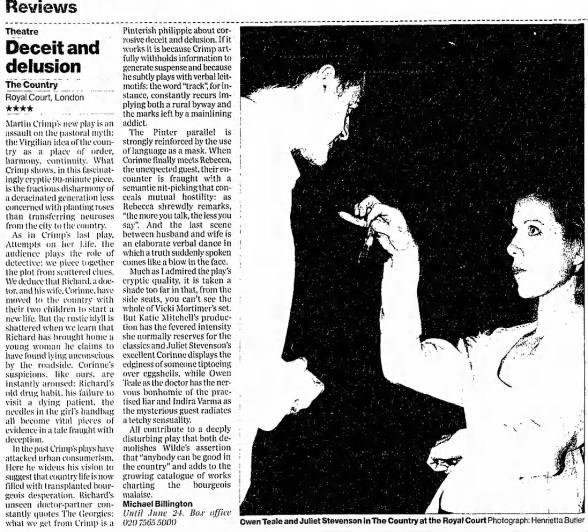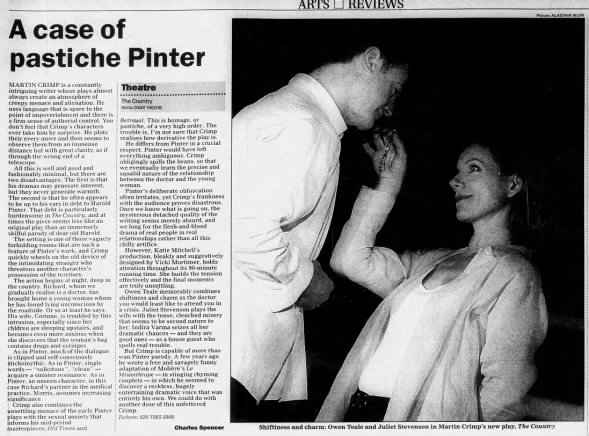I don’t suppose we booked a play named “Anatomy Of A Suicide” expecting to go to the theatre for a jolly time. Which is just as well.
In any case, the Vicky Featherstone regime at the Royal Court specialises in miserablist theatre, as I have discussed elsewhere, so we knew what to expect.
We chose this play because the synopsis sounded very interesting and because we enjoyed Alice Birch’s play, Little Light, a couple of years ago at the Orange Tree. We also tend to like Katie Mitchell’s work as a director. Rarely conventional, almost always interesting. This piece was no exception.
The play is about three generations of women. As the story starts to unfold, each scene in effect depicts three scenes, one for each of those generations, being shown to the audience at the same time.
If that sounds like information and sensory overload to you, then you are spot on; that is exactly what it is. In truth, most of the time there are two active, dialogue scenes and one less active, minimal or no dialogue scene. But still, a heavy sensory load, if not overload.
Further, the play is two hours long without an interval, which is a heck of a long time for drama without a break, even in the easiest of scenarios. Which this isn’t.
Janie described the experience immediately afterwards as feeling like we’d been put through a mental ringer.
And yet it worked as a play and we were both really pleased we’d seen it.
At first, I’m sure both of us were thinking “what on earth is going on here?”, but as the play pans out, the central device becomes apparent and you do get a good sense of what is happening in each of the three generations and how the earlier generations’ events impact on the later generations and how the later generations’ events echo those of the earlier ones.
The acting is superb. Hattie Morahan we’d seen before – in The City by Martin Crimp alongside Benedict Cumberbatch – that’s two weeks in a row the ubiquitous Cumberbatch has had a mention on Ogblog – I told you he’s everywhere. Mind you, that’s two weeks in a row for Martin Crimp as well.
Paul Hilton is a fine actor who we’ve seen several times – he does a grand job in this play. As does Kate O’Flynn – indeed all of the cast were very good.
It must be fiendishly complicated to direct and perform – like a dramatic symphony with so many different parts which have to time and sound in harmony with each other. In fact, we were at the first preview and Katie Mitchell stood up before the show to address the audience. She warned us that the piece was so complex to perform that they might have to stop and start in places on this first performance – but apart from a couple of stutters which might have passed for deliberate, the whole thing was done with aplomb that night.
So, despite the play being a grim portrayal of depression and suicide, it was gripping and superbly unusual drama. We’ll remember this one for a long time. For people with sufficient attention span and a sense of dramatic adventure, we’d highly recommend this play/production.
Janie and I certainly both enjoyed a glass or two of white wine with our light smoked salmon and salad supper when we got home; we’d recommend that too.







